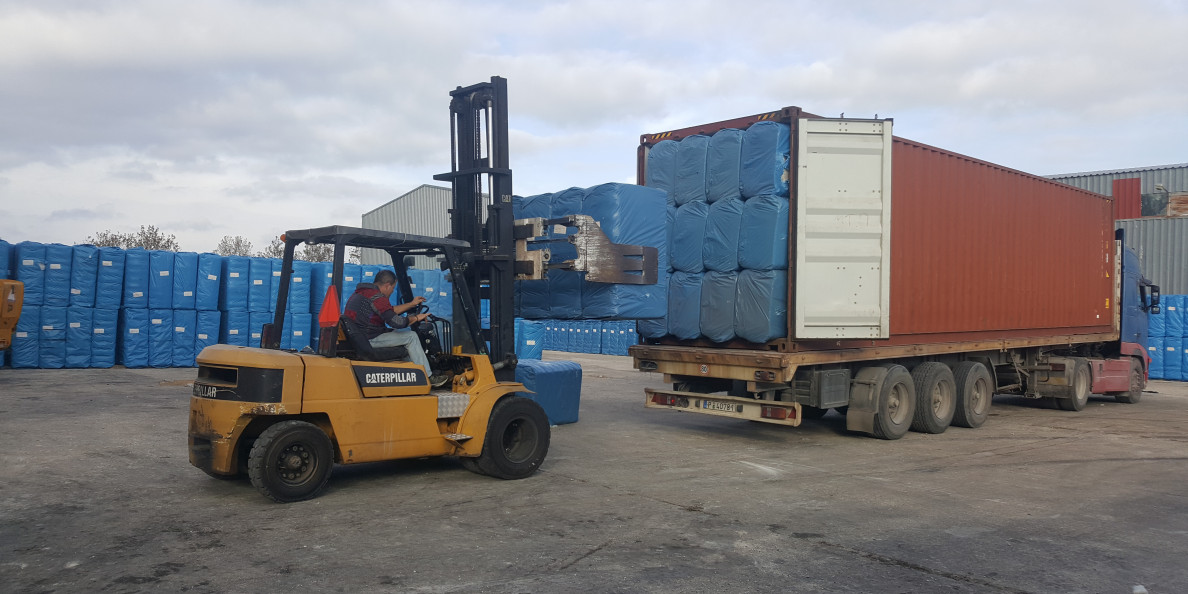When Russian troops invaded Ukraine on Feb. 27, global leaders faced the first major land war in Europe since World War II. Leaders in the West, particularly within the NATO coalition, worked fast to solidify their response to Russian aggression, which has included a series of far-reaching economic sanctions. In some ways, it’s a Cold War redux.
As recently as the end of January, however, the spot price of cotton traded on the ICE Exchange stood at nearly $1.30 per pound. As of March 4, the spot price was $1.20 per pound. Why the drop? After all, don’t commodity prices usually go up during times of crisis? Indeed, prices jumped for many commodities and manufactured products since the outbreak of hostilities, most notably oil.
A recent article in the Washington Post offered some insight: “A spike in oil prices to more than $110 per barrel and renewed supply chain disruptions—including fresh headaches for the auto industry also are likely to aggravate U.S. inflation, already at a 40-year high.” So, with this as a backdrop, let’s try to understand what’s going on in the cotton market.
War and consequences
When it comes to war, remember this one word: horror. The Russian invasion of Ukraine is a real-world event with real-world consequences. It’s not some video game or Hollywood movie. And it’s the horror of actual war that injects so much uncertainty into the world, and along with it fear and panic. For sure, anxiety and panic have contributed to the roller-coaster stock markets since the outset of the conflict. And make no mistake, emotions affect prices for everything from agricultural commodities to jet aircraft.
Moreover, there are levels of uncertainty that permeate various aspects of our lives—even when a war is an ocean or a continent away. A characteristic of globalized systems—both economic and cultural—is that disruptions quickly reverberate worldwide. However, those reverberations may come back to haunt us in unforeseen ways, bringing us back to lowly cotton.
Since the outbreak of the war, cotton spot prices have traded in a narrow band of about $1.20 per pound. In contrast, futures prices, particularly for contracts with May and December deliveries, actually fell. As of Friday, March 3, both stood at $1.16 and $1.01, respectively. Both were trending at about 10 percent higher at the end of January. The takeaway here is that cotton has not soared like other commodities. So, what are the implications? Will these prices stay put, accelerate, or do an about-face? It’s hard to know precisely, but we can break the forces that influence cotton prices today into their components.
Cotton market fundamentals
At the most fundamental level, we have supply and demand. From there, we have essential influences that affect supply and demand, such as inter-fiber, intra-crop competition, and the weather. Beyond that, we have emotional impulses (think fear), along with macro-economic and geopolitical forces (like war). Blend all of these, and we have a recipe for looking at the cotton market as a whole—and it’s a unique concoction for sure.
Let’s begin with supply and demand. The anticipated number of acreages farmers intend to plant provides a leading indicator of possible future prices; the National Cotton Council (NCC) and the USDA survey farmers about their planting intentions every year. Unfortunately, the USDA report won’t be out until the end of March. Still, the NCC announced the results from its report in early February, forecasting cotton plantings will increase by 7.3 percent for the coming season, suggesting a large crop.
In turn, a large U.S. crop often (although not always) means lower prices for cotton as the available supply could exceed reasonable demand for the fiber. Conversely, a small crop could have the opposite effect as there may not be enough supply available to meet demand.

Remember, farmers are intelligent people. They know their products, understand their markets, and know a level of fear just short of that of a shooting war, as weather can be their best friend or worst enemy from season to season, crop to crop. Too much rain or not enough can make or break a farm in a single season. Farming is not an armchair occupation and not for the weak of heart.
Additionally, at the farm level, there’s competition between crops. Farmers have to determine which crops will provide the greatest return. So, we typically have cotton competing with soybeans which compete with corn, and so forth. And, of course, we have competition from synthetic fibers. When cotton prices get too high, spinners shift their blend levels—assuming brands and customers accept a slightly different product without pushing back. More on this later.
Efficient markets or not
Back to markets: they churn on emotion. We’ve just coped with two years of a global pandemic with all of the ensuing lockdowns, an uneven economic recovery, fouled-up supply chains, and erratic consumer demand for products. The result? Product shortages, along with runs on limited available inventories of essential products (yeah, like toilet paper). It’s irrational and fueled by fear. No wonder stock markets are spooked.
Then, there’s the fog of war. Industry fails to operate efficiently in a fog, but it’s all a blur in war, creating unknown factors. For instance, the Russian army nearly destroyed the largest nuclear power plant in Europe the other day. What would have happened if it did? Fallout across Europe? How would NATO respond? Questions, upon questions. It’s impossible to model. All we know is the possibilities are frightening to consider.
So, when we contemplate the confluence of factors affecting the market, it’s reasonable to think that uncertainty would add up to higher prices as the market would treat all products as more dear, more essential, and harder to get. Until it doesn’t. Welcome to the cotton market.
A cotton anomaly?
Hence, we’re left asking once more: why are cotton prices falling when there’s a significant land war underway in Europe? After all, neither Russia nor Ukraine is a large importer of raw cotton, at least from the U.S. However, the cotton market may be telling us that there will be a large crop this year. Moreover, it may be alerting us of two other things. One, that demand for apparel may weaken the more extended the conflict in Europe becomes; and, two, more synthetics may be used by mills and brands to help boost weakening demand for finished apparel.
Suppose apparel sales in countries beyond Russia and Ukraine weaken. In that case, we’d have a real-world example of an unforeseen consequence of the war, a ripple effect representative of a change in consumer purchasing. To state it briefly, it’s possible that apparel sales will go from robust to disgust because people will shift their purchasing priorities away from apparel to other more essential goods and services. Not to mention how much soaring oil prices, and subsequently the cost of gas, will eat into discretionary income.
So, brands may switch to using cheaper synthetics to lower the price of their clothing and lure shoppers back into stores. But there’s a rub for our friends in the synthetic fiber business. Oil prices are up, while cotton prices are falling. So, is a price squeeze in the offing? Perhaps. Inflation was on the loose before the war, only now we have the added unknowns. If I were in the fiber business, I’d learn to live with fear for a while.
Πηγή: sourcingjournal.com

